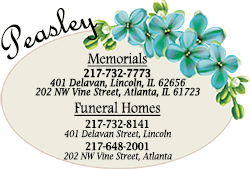|
 Before the rule was adopted in 1976, dozens of young children would
fall from windows as they were propped open during the warm months,
the study authors write in the journal Injury Prevention. Before the rule was adopted in 1976, dozens of young children would
fall from windows as they were propped open during the warm months,
the study authors write in the journal Injury Prevention.
"Window guards are something we take for granted nowadays, but when
New York residents receive a window guard notice, what's behind that
piece of paper is a full infrastructure that started decades ago,"
said lead author Dr. Amita Toprani, medical director of the New York
City Department of Health and Mental Hygiene's Bureau of
Environmental Disease and Injury Prevention.
"The program has saved hundreds of children's lives," she told
Reuters Health in a telephone interview. "It's invisible in our
day-to-day lives, but it's constantly happening."
Toprani and colleagues reviewed program records, correspondence and
legal decisions and interviewed staff members to outline a history
of the window guard rule. A 1971 study found that 201 child fall
deaths occurred from 1965-1969 during May through September, and 123
of the deaths, 61 percent, were falls from windows. A large number
of those incidents occurred in low-income neighborhoods with poor
housing quality in the Bronx and Manhattan.
In 1972, the NYC Health Department launched a pilot program in the
Bronx to distribute free window guards, record window falls and
increase awareness through radio and TV ads. Window falls decreased
about 40 percent in the following years, and the program expanded
citywide through 1975. During this time, 16,000 free window guards
went to 4,200 families.

Then the NYC Board of Health created the window guard rule in 1976,
which was the first such ordinance in the United States, the authors
note. It required owners and landlords of buildings with three or
more households to install window guards in each apartment where
children under age 10 lived, as well as in public hallways.
Healthcare professionals were also required to report window falls
to the health department.
The initial window guard rule was associated with a reduction in
falls from 175 in 1977 to 47 in 1980. Overall, annual reported child
window falls declined from 217 in 1976 to nine in 2016, and window
fall deaths decreased from 24 to two.
[to top of second column] |

"It was a pioneering idea in the 1970s to think of housing as a
driver of health," Toprani said. "Nowadays we look at housing
quality, indoor air quality, allergies and lead poisoning, and this
insight decades ago has made an impact."
In the years following implementation of the rule, legal challenges
popped up, with opponents arguing that the rule imposed a financial
burden on property owners or was unconstitutional because the city
couldn't impose regulations on rent-controlled housing that required
state approval. Courts upheld the window-guard mandate.

In the mid 1980s, the New York City Council required rental leases
to tell tenants about owners' obligations to install guards and in
1986, owners who failed to install approved guards became legally
liable if a child fell from a window.
"When the rule first started, people didn't see it as a right to
request a window guard, but that's the case now," Toprani said. "We
need to remind people that it is their right to have one in their
apartment, even if they don't have children."
Since 1976, other states such as New Jersey and Minnesota have
created window guard requirements.
Countries including the Czech Republic and the United Arab Emirates
have a high number of window falls as well, noted Michal Grivna of
UAE University in Abu Dhabi, who wasn't involved in the study. In a
2017 research paper, he and colleagues documented 96 falls in Abu
Dhabi during the past decade, including from windows and balconies,
he said.
Grivna is investigating new ways to create regulations and
inspections for window safety for children. "The concept of passive
protection is important in safety, including pedestrian crossings
and fences around swimming pools," he said in a telephone interview.
"Be aware that this safety issue is part of everyday life. Work to
improve your safety and the safety of your home."
SOURCE: https://bit.ly/2FiSMzW Injury Prevention, online April 6,
2018.
[© 2018 Thomson Reuters. All rights
reserved.] Copyright 2018 Reuters. All rights reserved. This material may not be published,
broadcast, rewritten or redistributed.
Thompson Reuters is solely responsible for this content. |